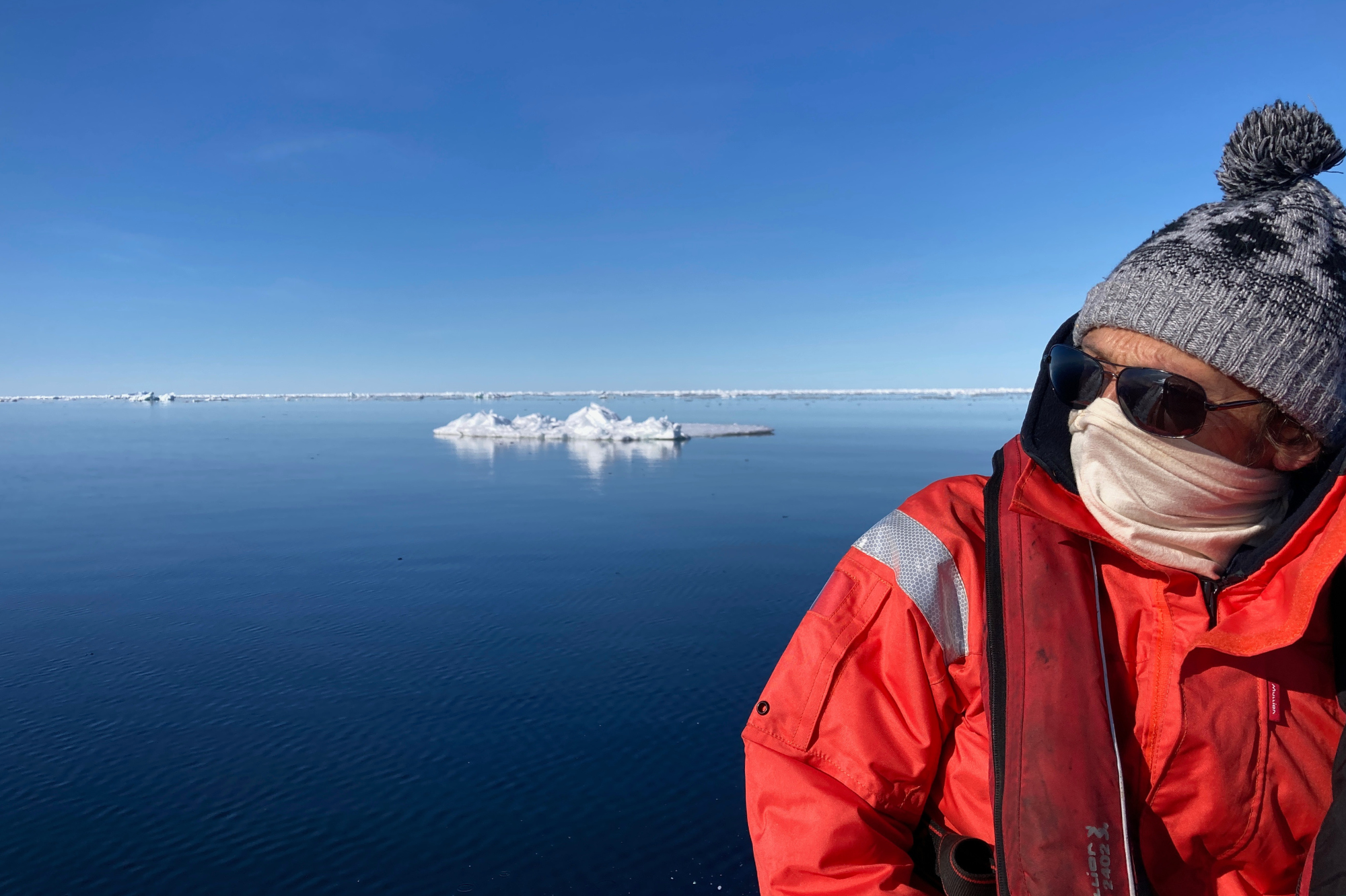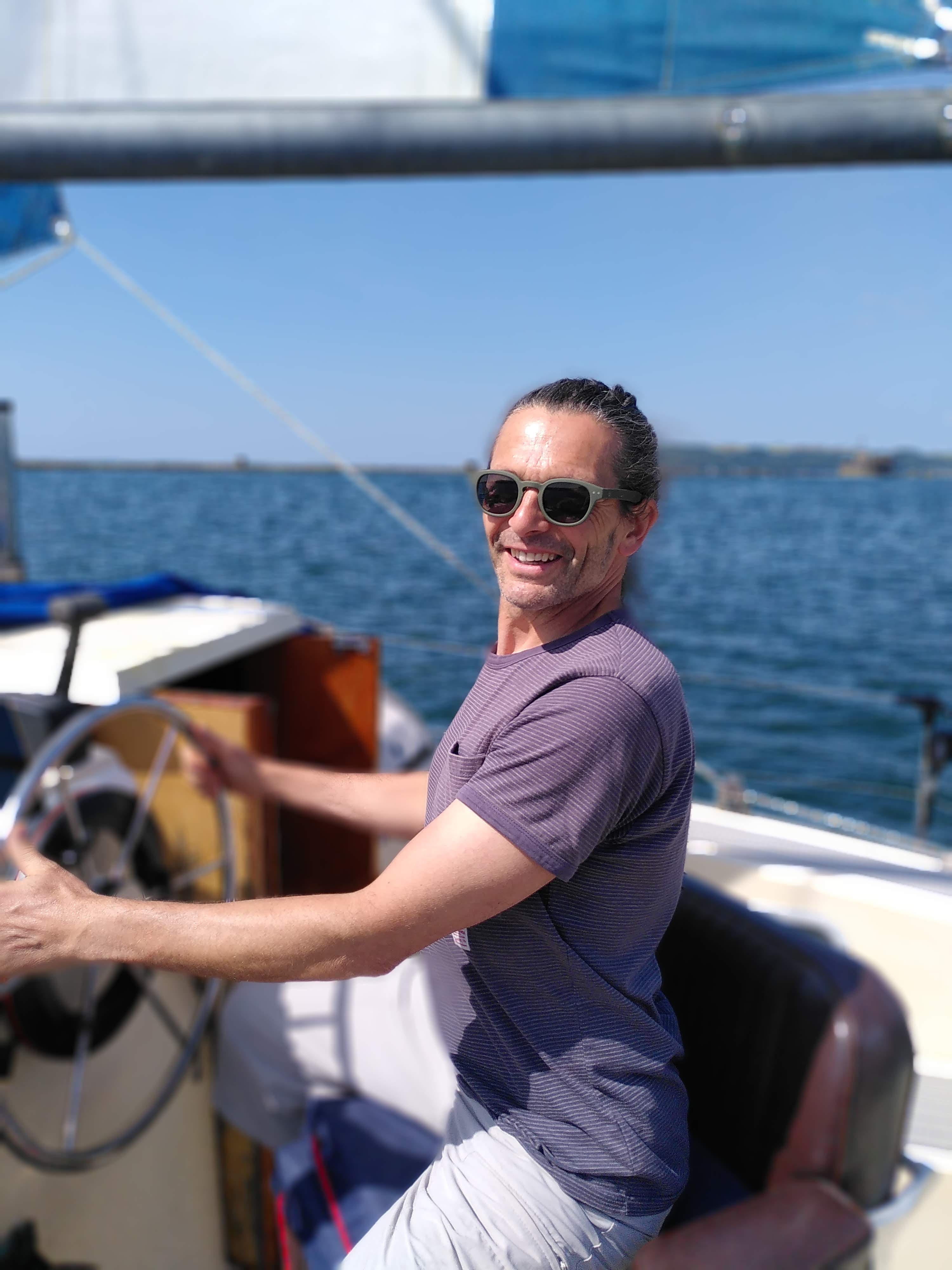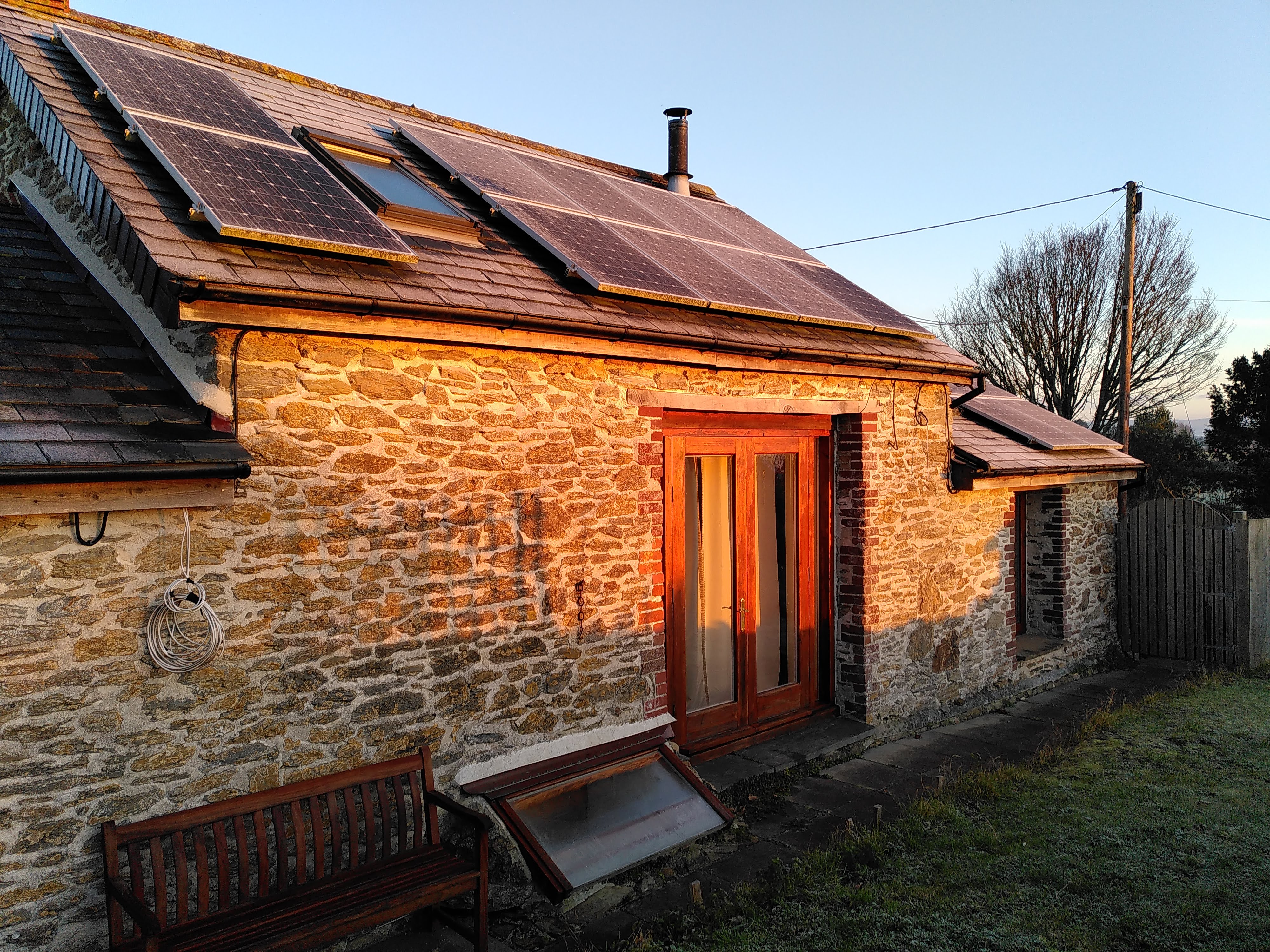Story
Staff spotlight: Dr Gavin Tilstone – Bio-optical oceanographer
9 June 2023

Above: Dr Gavin Tilstone in the Arctic
Dr Gavin Tilstone joined Plymouth Marine Laboratory (PML) back in September 2000, starting off as a post-doctoral research assistant working on estimating primary production using satellite data.
Fast forward to now, Gavin is a Merit Scientist with over 25 years’ experience in the fields of: Inherent and Apparent Optical properties, phytoplankton, photosynthesis, primary production, and ocean colour remote sensing. We started our chat to ask him to describe his role and what it involves.
“I work in the Earth Observation and Science Applications group, and lead research on satellite ocean colour validation and algorithm development, and especially on the use of satellite ocean colour in quantifying the marine carbon cycle. I also work on monitoring water quality using satellite data - including the detection of harmful algal blooms.”
“Through the projects that I manage, I enjoy working with a range of scientists from all science areas at PML. As part of my work, I also participate in field campaigns making optical measurements for the validation and development of ocean colour products. This opportunity to work at sea provides unique in sight into ocean conditions from the surface layer to deep, that create high or low areas productivity that modulate the uptake and release of CO2, which cannot be obtained from looking at satellite data on a computer alone.”
Above: Gavin at sea. He participates in field campaigns, making optical measurements for the validation and development of ocean colour products.
“Working in remote areas of the ocean - from the Arctic and Antarctic to the ocean deserts - has been a great honor. It’s amazing to observe these pristine environments at first hand. It has also provided insight into how important and fragile these regions are, and the necessity to protect them through policy and treaties.”
Above: Gavin at sea.
We’ve been really lucky to keep Gavin with us all of these years. We followed this question to next ask him what he enjoys most about his role.
“The great thing for me about working at PML is the opportunity to do multi-disciplinary research across diverse research areas - both internally in PML and internationally. Most of my work utilises in situ measurements and satellite remote sensing data, and to this end, I have strong links with the Marine Biogeochemistry and Observations Group and Marine Ecology and Biodiversity Group. The contracts I have been awarded in 2017 have also been with Sea and Society Group - on the socio-economic impact of harmful algal blooms on the shellfish industry.”
We then asked him to describe any special moments or career highlights during his time at PML.
“I’m lucky to have had quite a few career highlights! To name a few I would say:
-
Being awarded my first research grant, which was working on the validation of the European Space Agency satellite MERIS.
-
Working as part of the Sentinel-3 validation team on the validation and development of the European Space Agency’s latest ocean colour satellite, Sentinel-3.
-
Working on international programs such as the Census of Marine Life to characterise the diversity of marine species in the North Atlantic and why they occur in certain regions.
-
Working on contracts to enhance our understanding of how the oceans can balance and mitigate climate change.
-
Research on quantifying the sources and sinks of CO2 in the Atlantic Ocean using both autonomous in situ observations and satellite data to improve our understanding of how these change in certain regions and over time.
-
Quantifying the impact of ocean acidification on phytoplankton.
- Contributing to documents such as the Ocean State Report and OSPAR Quality Status Reports, which ultimately inform policy.”
“The WCO is important as it is a unique time series of oceanographic measurements that date back to the turn of the century. It provides crucial information on natural variability in oceanographic parameters in the western English Channel and anthropogenic effects in this area.”
“A recent project – concluding in December 2022 – which focused on the WCO, has been the S-3 EUROHAB project, which used the WCO to develop novel means of detecting harmful algal blooms and water quality parameters using satellite ocean colour data for the English Channel. I was the principal scientist and guided and developed the science carried out. We looked at the environmental drivers of toxic harmful algae in the Channel, their dispersion and transport and developed satellite algorithms to track them.”
Above: Karenia harmful algal bloom (HAB) risk map taken 9th September 2021
“S-3 EUROHAB was important because up to now, water quality and harmful algal blooms have been detected using boat surveys only. But satellite remote sensing offers a means of detecting these at higher spatial and temporal resolution, and used in synergy with those in situ measurements, provide a powerful tool to aid the monitoring of these parameters from space.”
As one job finishes, another begins. Gavin has already been awarded a new contract: ‘VISualisation and Assessment of water quality using an Open Data Cube FOR the weStern English chAnnel – Vis4Sea' by the UKRI STFC EO4AgroClimate call, which will use from the Western Channel Observatory. We asked Gavin to tell us a little more about the project and what it involves.
“In this project, remote sensing in conjunction with in situ data will be utilised in an Open Data Cube (ODC) to provide stakeholders (both academic, marine managers, shell fishermen, recreation organisations) with near real-time maps and predictions of water quality events and the distribution and condition of littoral habitats.”
“The data cube - called AquaWatch Data Integration and Analysis System (ADIAS) - will facilitate the use of in situ sampling, automated sensor network and multi-source, multi-sensor satellite data for monitoring the water quality in Plymouth Sound, UK and the Fitzeroy River and adjacent coast of Australia.”
“ADIAS will apply machine learning and deep learning algorithms to that data. Optical algorithms will be applied to high resolution satellite data to produce new generation water quality products to address specific environmental case studies associated with periodic flooding, because of heavy rainfall events resulting from climate change.”
“The frequency and magnitude of these flooding events in coastal areas of the western English Channel and eastern Australia is increasing. This poses an added risk to human health and to the environment - through the deposition of agricultural fertilisers, sewage effluent and, in some locations, heavy metals, which can in turn be deleterious to seagrass beds and mud flats that are important carbon sinks in these coastal areas.”
We’ve covered some pretty complex science in our interview today, so our next couple of questions were aimed at getting to know Gavin, the person behind the science. We first asked Gavin what he enjoys most about living and working in Plymouth.
“The best thing about living and working in Plymouth is the beauty of the wider surrounding area of Devon and Cornwall; the beaches, coastal paths and local seascapes.”

Above: Gavin sailing - one of his many interests! And this photo was taken just last weekend - during a hot sunny spell over the first weekend of June.
And to finish, we wanted to hear what Gavin would typically get up to after a busy day in the office to unwind, or whether he had any interests or hobbies he’d like to tell us about.
“After a busy day in the office, I enjoy cycling home, then practicing Iyengar Yoga and after that, eating homegrown organic food.”
“I am a qualified Iyengar Yoga teacher; see https://www.iyengaryogadevon.org.uk/ and I teach classes in Plymouth, donate the proceeds from the classes to local charities and train teachers.”
“My biggest hobby is building and DIY. I built my own carbon zero ‘eco-home’. I started it with Dr. Peter Land at PML and then carried on, to complete it alone. The concept was to use mostly reclaimed materials derived from a 50-mile radius from the site. The house is a barn conversion made of natural stone, lime mortar and reclaimed slate that has a highly insulated timber frame within it, packed with recycled paper insulation. It is powered by the sun (photovoltaic electricity and solar thermal), rain (water harvesting) and air (air heat source pump), uses almost no carbon (I do have a wood burner but have planted 100’s of trees to balance the emissions) and is almost completely off grid. It is proof of concept that all of the basic necessities to live (heat, water, food) can be generated from the elements and that humanity does not need to burn fossil fuels to derive these.”

Above: Gavin's incredible eco-home, which is almost completely off-grid.
Thank you so much Gavin for taking the time to chat to us.
Find out more about Gavin and his work here >>
Find out more about the Western Channel Observatory here >>